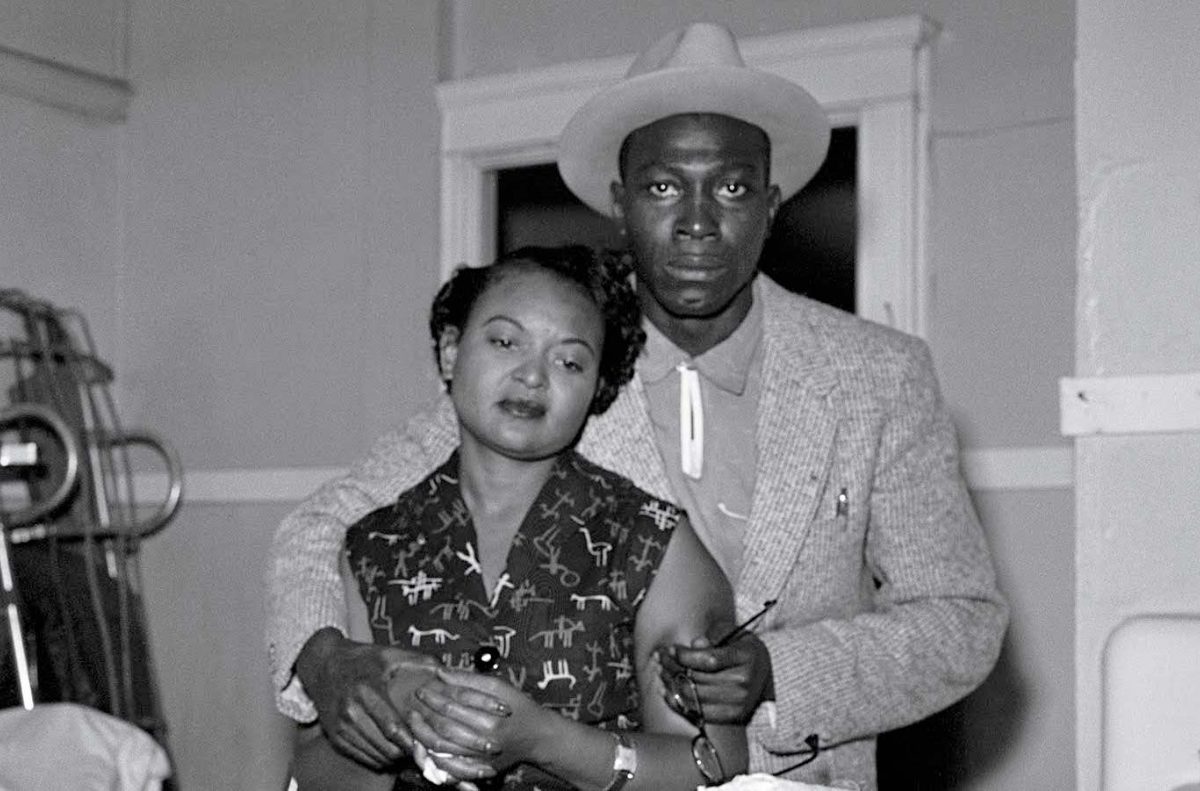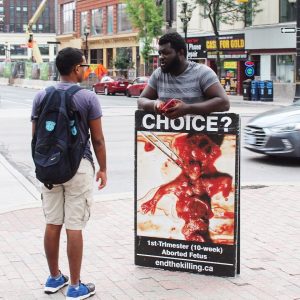Mary Turner’s story died when she died. Mary Turner’s protest died when she died. Mary Turner’s pre-born baby died when she died. Mary Turner’s name died when she died.
You don’t recognize her name. You don’t recognize her story. And if you were there on May 19th, 1918, you wouldn’t recognize her body either.
Mary Turner was a mother of three. She was a wife to Hayes Turner. She was a woman of colour—and that’s why she was killed in Lowndes County, Georgia.
Mary Turner was thirty-two or thirty-three years old when it happened. The day earlier on Saturday May 18th, 1918, Mary Turner’s husband was arrested by police officers for allegedly playing a role in Hampton Smith’s murder. Hampton Smith was an abusive White plantation owner, who hired poor Black workers including Hayes Turner and Mary Turner to work on his plantation.
Hampton Smith was shot and killed by Sidney Johnson, one of his Black workers in early May, 1918. Sydney Johnson fled the scene and went into hiding.
On Saturday morning, May 18th, 1918, police officers arrested Hayes Turner and charged him for murder. The police officers claimed Hayes Turner was one of many Black men involved in Hampton Smith’s murder. There is zero evidence to suggest that Hayes Turner played any role Hampton’s Smith’s murder.
That Saturday night, police officers escorted Hayes Turner out of prison and handed him over to a White supremacist mob. The mob attacked Hayes Turner and dragged his body to a tree, where they hanged him. His corpse hung from the tree for two days until it was finally cut down the following Monday.
Mary Turner protested her husband’s killing from that Saturday night until Sunday afternoon when she was captured by the White supremacists mob. On Sunday, May 19, 1918, Mary Turner was a widow for one day, pregnant for eight months, and tortured for hours.
Between attacking Hayes Turner on Saturday night and Mary Turner on Sunday afternoon, the White supremacists went to their local churches on Sunday morning, where they listened, apparently to the gospel, sang hymns, and assembled again in the afternoon to kill Mary Turner.
That afternoon, the White supremacists tied Mary Turner’s hands and ankles and hung her upside down on a tree. Then they soaked her with gasoline and burned her alive. While she screamed in agony, they slit her stomach open with a knife, and her pre-born baby fell to the ground crying. The White supremacists stomped on and crushed the baby’s head.
Then the mob shot hundreads of bullets into Mary Turner’s body. By the end, Mary Turner’s corpse hung from the tree with bullets, blood, and without a baby.
Mary Turner’s lynching is the most horrific lynching in American history. But before you read this article, you didn’t know her name—and after you read this article, you will forget her name.
Mary Turner is just one of 4,743 Black Americans who were lynched between 1882 and 1968—and you don’t know their names. You don’t know their stories. You don’t know their faces—except one: Emmett Till.
You know his name. You know his face. You know his story. Emmett Till was 14 in 1955 when his mother sent him from their home in Chicago, Illinois to visit his relatives in Mississippi. One night, he supposedly flirted with a White woman named Carolyn Bryant. Three nights later, while Emmett Till was asleep, Carolyn Bryant’s husband, Roy Bryant, and his half-brother, J.W. Milam, forced themselves into Emmett Till’s relatives’ home and dragged him away.
Emmett Till’s body was discovered three days later in a river. He was unrecognizable. He was naked. His body was disfigured. His neck was wrapped by a barbed wire tied to a fan blade to weigh him down the river. His face was impossibly swollen. He had a bullet wound just over his right ear. One of his eyes was gouged out. He didn’t look like Emmett Till anymore. He was identified only by the initials on his ring.
Roy Bryant and J.W. Milam were charged for Emmett Till’s murder. At their trial, they confessed to kidnapping Emmett Till, but they claimed they released him soon after. They suggested they didn’t kill Emmett Till. They contended that the body retrieved from the river wasn’t Emmett Till’s body. In fact, they insisted Emmett Till was still alive.
They were ridiculous. They were appalling. They were murderers. But they were White. They weren’t stained by melanin. They weren’t viruses to society. They weren’t victims of segregation. Their grandfathers weren’t slaves. Their grandmothers didn’t give birth to slaves. They weren’t Black. They weren’t guilty.
The all-White jury in segregated Mississippi deliberated for only an hour before they declared Roy Bryant and J.W. Milam innocent. One of the jurors’ said, “If we hadn’t stopped to drink pop, it wouldn’t have taken that long.”
A year after the trial, Roy Bryant and J.W. Milam admitted in an interview that they killed Emmett Till.
But Emmett Till’s story didn’t die when he died. His name didn’t die when he died. You recognize his name. You recognize his story. You recognize his face. Why?
Why did you know Emmett Till’s name and not Mary Turner’s? Why did you know Emmett Till’s story and not Mary Turner’s? Why do you recognize Emmett Till’s face and not Mary Turner’s? Why is Emmett Till the only name, the only face you know from the 4,743 Black Americans who were lynched between 1882 and 1968?
May 19th, 2018 marked the 100th anniversary of Mary Turner’s lynching. But no one knew. No one cared. However, last week was the the 63rd anniversary of Emmett Till’s death, and it received attention on mainstream media and social media. In fact, last month the United States Department of Justice reopened the Emmett Till case for the second time in 20 years.
We remember Emmett Till’s name, we remember Emmett Till’s story, we remember Emmett Till’s face because we’ve seen the horrific pictures of injustice.
When Emmett Till’s casket arrived from Mississippi to Chicago for his funeral, it was nailed shut. Mississippi officials didn’t want people to see what Roy Bryant and J.W. Milam had done to Emmett Till. They wanted to cover up the injustice. But Emmett Till’s mother, Mamie Till Bradley, refused. She wanted to see what had been done to her son. So she forced the funeral directors to open the casket, and when she saw that her son was brutally beaten, when she saw that his body was disfigured, when she saw that his face was impossibly swollen, when she saw that he didn’t look like Emmett anymore—she wanted the whole world to see it too. She held an open-casket funeral for Emmett Till.
Mamie Till Bradley invited photographers, journalists, and reporters to publicize what segregation had done to her son. The pictures of Emmett Till’s corpse irritated some Americans, incited a national debate over segregation, exposed segregation to the international media, and ignited the Civil Rights Movement.
Time Magazine said, “For almost a century, African Americans were lynched with regularity and impunity. Now, thanks to a mother’s determination to expose the barbarousness of the crime, the public could no longer pretend to ignore what they couldn’t see.”
In Montgomery, Alabama, Rosa Parks attended a rally for Emmett Till, the first rally organized by Martin Luther King, Jr. Three months after the funeral, Rosa Parks refused to give up her seat on a bus to a White man in Montgomery, Alabama. When she was asked in an interview why she refused to give up her seat, she said, “I thought of Emmett Till and I just couldn’t go back.” Rosa Parks refusal to give up her seat on the bus culminated into the Montgomery Bus Boycott, led by Rosa Parks and Martin Luther King Jr.
If it wasn’t for the horrific images from Emmett Till’s open-casket funeral, Rosa Parks and Martin Luther King Jr. probably wouldn’t have become leaders within the Civil Rights Movement. If it wasn’t for the horrific images from his open-casket funeral, you wouldn’t know Emmett Till’s story, just as you didn’t know Mary Turner’s story.
Pictures capture injustice better than words do. Pictures expose injustice better than words do. And sometimes pictures describe injustice better than words do. And that is why abortion victim photography is so crucial for the pro-life movement. The world didn’t know what segregation did to Black Americans until Mamie Till Bradley opened Emmett Till’s casket. And the world won’t know what abortion does to babies until we show them images of aborted fetuses.
Abortion victim photography angers pro-choice people and hurts some post-abortive women. But every social reform movement throughout history made the diffilcult choice of risking offending people to establish justice. The abolitionists offended people when they shared copies of the Brookes slave ship diagram. And Mamie Till Bradley and the Civil Rights Movement offended people, including Black mothers who lost their own sons to lynching when they shared images of Emmett Till’s corpse.
Mamie Till Bradley didn’t enjoy sharing images of her sons’ corpse to anyone. But she understood that it was an effective strategy to end segregation, and she was right. Emmett Till’s images helped establish the Civil Rights Acts in the 1950s and 1960s, which abolished segregation.
And if we want to make abortion unthinkable, we need to embrace abortion victim photography. The Canadian Center for Bio-Ethical Reform conducted a survey a few years ago, and they discovered that almost 70% of people who see abortion victim photography develop more negative feelings about abortion. And my experiences at CCBR’s internship, affirmed the results of the survey. Without abortion victim photography, I wouldn’t have convinced 73 pro-choice people into becoming pro-life this summer.
In an interview in 1992, Roy Bryant said, “Emmett Till is dead. I don’t know why he can’t just stay dead.”
People die, pictures don’t. Pictures keep dead people alive. Victim photography protests injustice and preserves the victims names and stories. Aborted babies do not have names, but they have stories. And if we want to tell their stories to the world, we need to show their pictures to the world. If we don’t want aborted fetuses to be forgotten like Mary Turner, if we want their stories known like Emmett Till’s, we need to embrace abortion victim photography. Because pictures never die.

